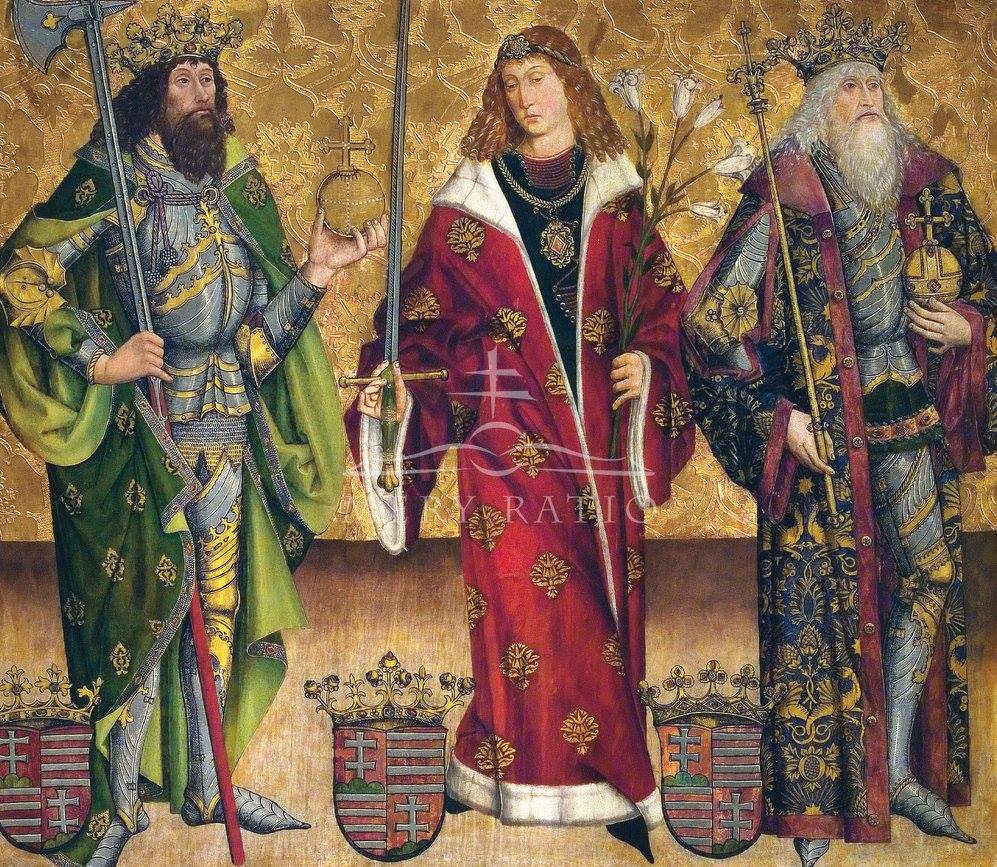
Szepeshely (Spišská Kapitula, Zipser Kapitel, Capitulum Scepusiense) is a municipality in the region of Szepesváralja in Slovakia. It was founded in the 11th century in the Kingdom of Hungary, in the neighborhood of a fortified Benedictine monastery. The town was a unique ecclesiastical town, with Canon’s Row as its only street and the Bishop’s Palace and the Cathedral next to it. Location: https://tinyurl.com/5562vcs5

Around 1150, the first German settlers arrived in the northern, largely uninhabited areas of historic Hungary at the invitation of King Géza II of the Árpád dynasty. The new population, called “Saxons” in history books, were skilled in trade and mining. Read more about the Szepes Region on my page: https://www.hungarianottomanwars.com/essays/szepesseg/

Their residences, among which Lőcse soon stood out, took the form of towns, with all the features of trendy markets, and local judges. After the construction of the castle of Szepesvár (Hrad Spiš), which housed the royal comes, on a nearby rocky peak, the ecclesiastical head of the area, the Chapter of Szepes, moved here.

The first documented mention of the Provost of the Chapter of St. Márton (Martin) dates back to 1209. The chapter had extensive authentication activities, which included the written documentation of land sales by landowners in the area.

In 1241 and 1242, the Mongol hordes invading the country besieged the castle of Szepesvár, but they only damaged its walls, they could not conquer it. In 1249, during the restoration of the fortress, King Béla IV granted the provost of Szepes, Mátyás, permission to build a tower and additional residential buildings in the royal castle of Szepesvár.

Similarly, the Provost of Szepes established an ecclesiastical settlement on the hill opposite the castle, surrounded by an oval stone wall, where a two-towered, three-nave church and a house for the canons were built. In 1273, the provost Muthmerius left a large sum in his will for the construction of the western tower of the church.

Another important work is a preserved mural painted in 1317 to commemorate the reign of King Károly Róbert of the Szepesség region, depicting the coronation of the monarch. The church buildings, originally Romanesque, were rebuilt in 1487 in the Gothic style that had become dominant by then, culminating in the construction of the Szapolyai burial chapel.

After the deaths of Baron Szapolyai Imre in 1487 and his brother István in 1499, the bodies of the two powerful Palatines were buried here in the Gothic-style chapel attached to the parish church, where their red marble tombs can still be seen today.

The fate of the ecclesiastical settlement of Szepeshely or Szepeskáptalan was closely connected with the fortress of Szepesvár Castle, which stood not far from it, and the small town always lived in its shadow during the storms of the historical centuries.
Here is more about Szepesvár Castle: https://www.hungarianottomanwars.com/kingdom-of-hungary/szepesvar/

To meet the needs of the monks who lived there, the residential buildings were enlarged and the defensive works were extended to ward off enemy attacks, in an attempt to deter thieves who would seek the rich treasures of the church. Despite this, it was never considered a major defensive site from a military point of view.

Throughout the Middle Ages, it was under the jurisdiction of the Archbishopric of Esztergom, only becoming an independent Catholic bishopric of Szepes in 1776. In 1647, Jesuits settled here and built a monastery and a grammar school. The grammar school moved to Lőcse together with the Jesuits in 1671. This ecclesiastical center, which has survived the storms of history, is still an attractive destination for visitors today.

A unique ecclesiastical settlement in historical Hungary, the strong stone wall of Szepeshely / Szepeskáptalan hides a single street with a canonry of 10 houses, and on the top of the hill the bishop’s palace (built in 1776), the cathedral and the former seminary.

The stone wall with a parapet and battlements, reinforced between 1662 and 1665 with small circular fortifications, and the two square gate towers are also intact. Its most beautiful jewel is the late Gothic Szapolyai Chapel, where the tombs of two brothers of the wealthy noble family, Imre (+1487) and István (+1499), can be seen. Although the church buildings were later rebuilt in the Baroque style, they still faithfully preserved the medieval monuments.

According to some sources, Mekcsey István, who served as a second captain in the castle during the siege of Eger Castle in 1552 (captain after the siege until 11 March 1553), was buried in the Cathedral of St. Márton after his murder in Sajóvárkony on 13 March 1553. In the cemetery, you can see a monument raised for the heroes of the Battle of Branyiszkó. On February 5, 1849, at the Branyiszkói Pass, the troops of the Hungarian Army, led by Colonel Richard Guyon defeated the Imperial troops of General Franz Deym.

How to get there:
The ecclesiastical settlement of Szepeshely (Spiisska Kapitula) in the Szepes region is famous for its magnificent monuments. It is located to the east of the town of Lőcse (Levoča, Leutschau), which can be reached by turning off the main road E 50. The town of Szepesvár can be seen on the opposite side of the steep slope, and in parallel, there is a historical ensemble of monuments, which is now the seat of the Catholic Diocese of Szepesség, surrounded by a wall. The church and the houses of the canons, which are hundreds of years old, are still intact.

Dear Readers, I can only make this content available through small donations or by selling my books or T-shirts:
Please, support me with a coffee here: https://www.buymeacoffee.com/duhoxoxa
You can check out my books on Amazon or Draft2Digital, they are available in hardcover, paperback, or ebook:
https://www.amazon.com/dp/198020490X or at https://books2read.com/b/boYd81

My work can also be followed and supported on Patreon: Become a Patron!http://Become a Patron!
Become a Patron! and donations can be sent by PayPal, too: https://shorturl.at/qrQR5


Subscribe to my newsletter here: https
You can see many nice pictures of Szepeshely here:



























